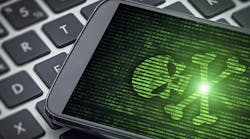IT personnel are well-versed in identifying risks and developing an airtight firewall and encryption practices that prevent cyberattacks that threaten critical databases. Without an endpoint security strategy in place, it’s possible to have a gap in one of the main areas of vulnerability: human users.
Companies know the value of human resources, but IT departments often find out the risks they present. Employees may make one great decision after another, but a single lapse in judgment and a click on a phishing email could bring a company under attack. Employees often throw open the doors to a virus without intending any harm. If the company does not have endpoint security, risk associated with the human element are inevitable.
Awareness is the first defense.
Unfortunately, some of the riskiest humans in a company are right in the IT department. If an administrator with unlimited access to systems opens a phishing email, the entire company can potentially be impacted by a virus.
Organizations can combat this problem by creating a culture of awareness. Training is helpful in teaching users to avoid phishing emails or infected files. Training scenarios with simulated email exchanges are effective in educating employees on how to recognize a phishing email or a compromised file.
One of the challenges of this approach is that it can be difficult to keep pace with the rate of change among cyberattacks. For instance, teaching employees to open files only from a trusted source can be complicated when hackers use the names of trusted sources in their emails, or when an employee shares a file that turns out to be infected.
Unfortunately, antivirus software and awareness training can’t combat this kind of attack. Employees can be fully trained on the types of emails they should avoid, but they still may download an infected file from a trusted colleague. Companies need something more to protect themselves.
Endpoint security offers another layer of protection.
There needs to be protection that fills the gap between firewalls and antivirus software. Endpoint security focuses on anomalies that indicate a compromise in areas like memory or processor activities, shutting down those processes to prevent infiltration by a cyberthreat.
This strategy offers better protection by eliminating the potential for human error. Endpoint security doesn’t require the manual processes and decision-making that come with traditional antivirus protection, such as running a scan or mapping out problems.
According to Engadget, "While 143 million US residents were affected by the Equifax breach, they weren’t the only ones impacted. Nearly 700,000 UK residents also had their information stolen — including phone numbers, driver’s license numbers, email addresses, user names, passwords and partial credit card details — and UK authorities are now investigating the company."
A Cybersafe Year So Far?
So you’ve survived the year so far with no serious data breaches or other cybersecurity mishaps. That’s good news. The bad news, however, is that you’ll have to do it all over again to get through the whole year that way, and the end of the year is a lot rougher. The holidays are everyone’s worst nightmare to deal with cybersecurity and identity theft.
According to Future Crimes, nearly 20% of Americans have been victims of personal identity theft. Once bad hackers compromise your connected devices, they are free to steal your bank info, tax records, and other financial data. This has been a very active season in terms of data breaches.
Here are 5 tips for getting through the rest of the year as safely as you have so far:
TIP #1. Train employees to create strong passwords.
You can have all the flashy technology out there, but if your employees compromise your network, it’s useless. Lead your staff through good password practices such as having separate passwords for different accounts, and writing down passwords for safe-keeping away from the computer.
TIP #2. Enable disk encryption.
Disk encryption helps you protect your information by converting it into unreadable code should an unauthorized party attempt to access it.
TIP #3. Ensure you have a firewall. And test it.
Nearly any internet connection can be vulnerable to hackers without some sort of protection in place, and firewalls are designed to prevent unauthorized access to or from private networks.
TIP #4. Install antivirus and malware defense agents.
If an outside party makes it through your firewall, you’re going to need a malware defense agent. And if the malware agent doesn’t address the threat, the antivirus blogs the application from running.
TIP #5. Have a solid backup with off-site replication.
Recover failed communications and protect data with off-site replication. Storing data off-site allows you to minimize the scrambling to retrieve your data should a breach occur. It’s the difference between a complete loss and a recoverable inconvenience.
About the Author: Michael Lewis, CIO, Copper State is a 20 plus year cyber expert who collaborates with and advises clients’ IT departments, formulates strategic IT goals, assists with planning IT budgets and facilitates technology changes within a business – all the same functions as a conventional CIO. Michael has extensive experience in the IT industry and has had training/certifications with Microsoft, VMWare, Cisco, Linux, SonicWALL and Ubiquiti to name just a few. For more information, please contact Ana Tackett at 480-828-0762 or [email protected].




